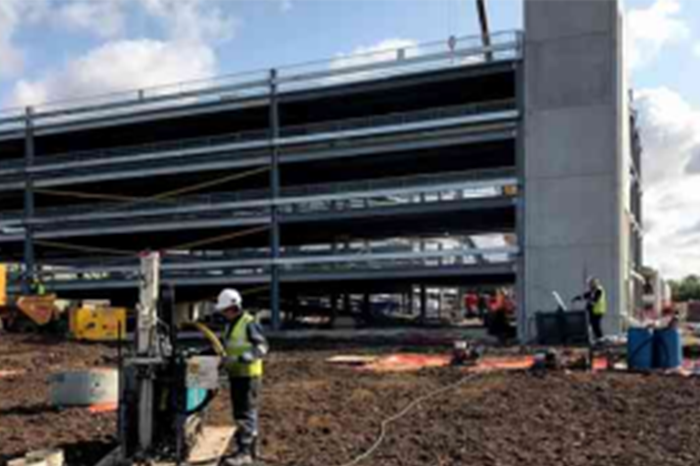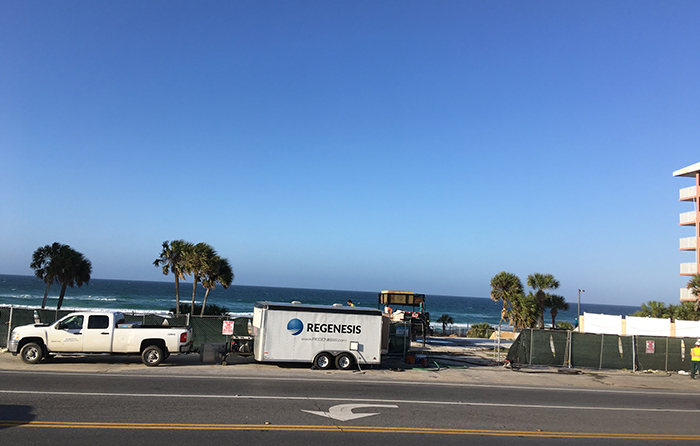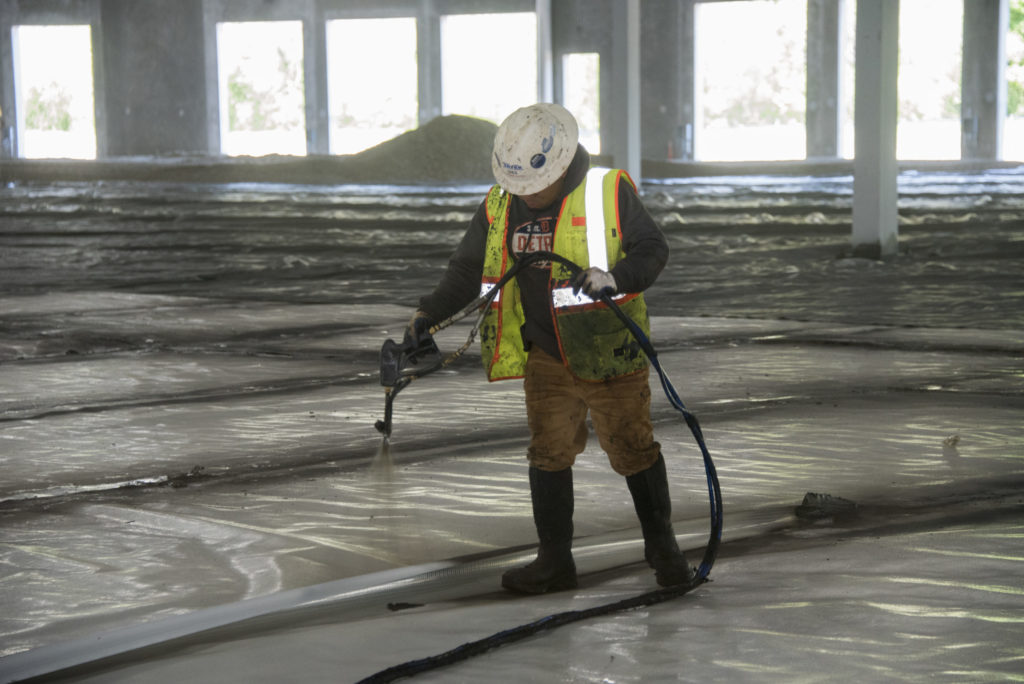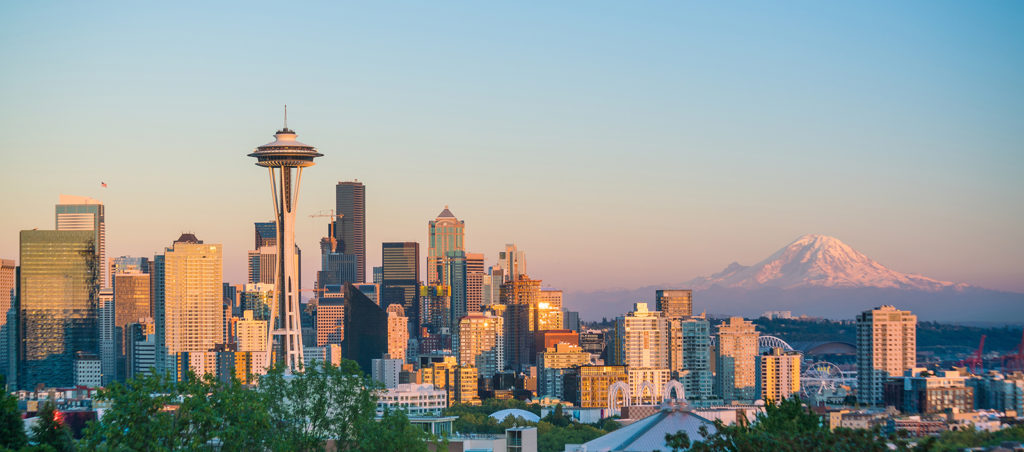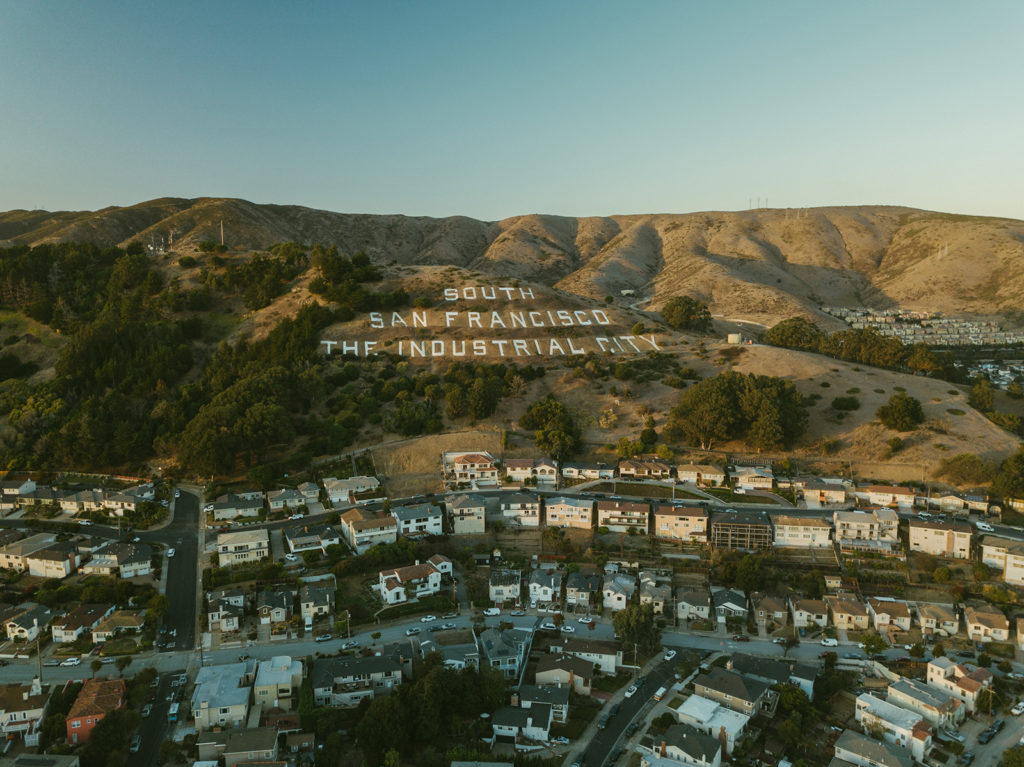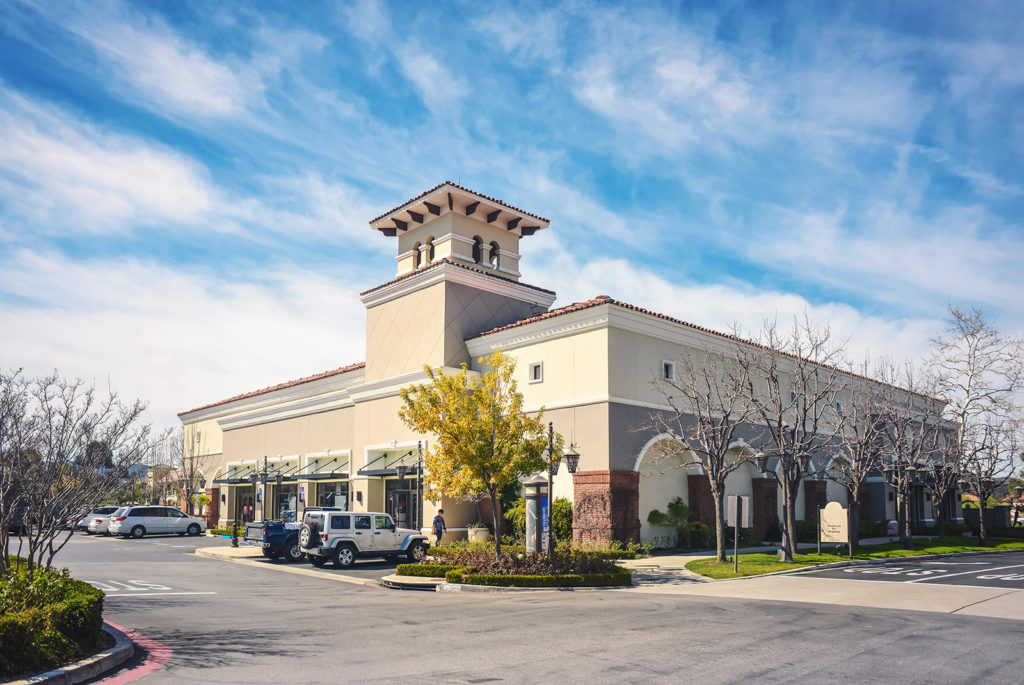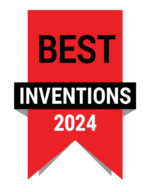PetroFix and ORC Advanced Excavation
Case study highlights:
- Success at this site can shape and improve the treatment of other similar sites
- PetroFix technology allowed Antea Group to design a remediation strategy that was fast, affordable, and highly effective
This case study reviews a former gas station site where Antea Group developed an excavation plan involving PetroFix™ and ORC Advanced® pellets to address contaminant levels following the excavation and removal of contaminated soil. This marks the first site where the remediation plan employs applying a mixture of both PetroFix and ORC Advanced pellets at the base of the excavation along with spray-applying PetroFix to the sides of an excavation pit. Antea Group was tasked with the remediation of the site. Working with the REGENESIS team, Antea Group specified the application of PetroFix in conjunction with the excavation due to the product’s ability to sorb and biodegrade petroleum hydrocarbons. The remediation design called for mixing PetroFix and ORC Advanced pellets into the base of the excavation site and applying PetroFix to the sides of the excavation pit.
Combined approach to remediate chlorinated solvents in Cambridge, UK
In Situ reagent barriers (HRC) treat contaminated groundwater in sandstone under a schoolRead More
Non-Detect Achieved at Florida Spill Site
Case study highlights:
- Unlike other approaches applied onsite, PetroFix met targets within 60 days and has remained below this target level for a year
- PetroFix was able to degrade the petroleum contaminants within a fast-moving, 150-yard plume
- Due to the successful pilot test results, Advanced Environmental Technologies, LLC (AET) has applied for a full-scale application through the FDEP
This case study reviews a multi-use convenience store site in Panama City Beach, Florida impacted by contamination from a leaking underground storage tank (UST), where PetroFix™ Remediation Fluid, a micro-scale carbon suspension with soluble electron acceptors, was applied to reach target goals within 60 days. AET sought out a technology that was affordable and would be guaranteed to lower the contaminant levels below the target levels. AET partnered with REGENESIS to conduct a pilot test using its new PetroFix activated carbon amendment. PetroFix is successful in high concentration source areas because it provides a permanent, in situ sorptive and biologically permeable reactive barrier (PRB). AET chose this technology because it offered a cost-effective solution that would quickly address the groundwater concentrations.
Retro-Coat Utilized to Prevent Harmful TCE and Chloroform Vapor Intrusion
Case study highlights:
- The Retro-Coat barrier and Vapor-Vent system were incorporated into already planned renovations, saving the site owner time and money.
- Retro-Coat is resistant to both TCE and chloroform and is a wearing surface, rated for foot and forklift traffic.
- The Retro-Coat system layers cure quickly, reducing building downtime.
- The combination of Retro-Coat and Vapor-Vent was chosen as a remedial solution to mitigate the risk of harmful vapor intrusion.
This case study reviews a former industrial manufacturing facility in Greenville, SC that was purchased under a Voluntary Cleanup Contract and Brownfields agreement with the South Carolina Department of Health and Environmental Control (SCDHEC). Prior to renovation of the property, it was estimated that two VOCs, chloroform and TCE, had indoor air concentrations above EPA Industrial/Commercial Risk Based Screening Levels (RSL). Environmental consulting firm Bunnell Lammons Engineering recommended the installation of Retro‑Coat®, a vapor intrusion mitigation coating system, in conjunction with a passive sub-slab depressurization system (SSDS) comprised of Vapor‑Vent to protect the structure from vapor intrusion.
Construction Time Reduced with New Vapor Barrier System
Case study highlights:
- Liberty Park is being transformed from underutilized into a property that will bring jobs and growth to the community.
- MonoShield has the efficiency of a prefabricated barrier system and the flexibility and responsiveness of a spray-applied component for sealing penetrations, wall terminations, and seams.
- MonoShield is both time — and cost-efficient; it can be installed 30-40% faster than alternate plastic sheeting or HDPE systems.
- Cooperation among numerous stakeholders: The Michigan Department of Environment, Great Lakes, and Energy (EGLE), Ashley Capital, SME, Oliver Construction, Land Science, and S&H Waterproofing.
This case study reviews a brownfield site that posed multiple remediation challenges with a variety of known contaminants including arsenic, lead, and methane. To build on the site would require a unique foundation along with a vapor intrusion mitigation solution. Working with the developer Ashley Capital’s environmental consulting firm SME, Land Science recommended MonoShield, a new and innovative vapor intrusion mitigation system. This modified asphalt-nitrile vapor barrier system is designed to withstand even the toughest vapor intrusion conditions, ensuring a safe environment for years to come. SME chose to be the first to install MonoShield because it provided the best chemical resistance for this brownfield site and would also save the client time and money.
MonoShield™ Installed At Site Of Former Hazel Park Raceway
Case study highlights:
- With MonoShield offering a more reliable, cost-effective solution, the project was assured of meeting milestones and staying on time and on budget.
- Hazel Park welcomed the economic development and the promise of future jobs coming to the community through this key redevelopment project.
- The support of the city of Hazel Park, the state of Michigan, the Michigan Economic Development Corporation (MEDC), and the Michigan Department of Environment, Great Lakes, and Energy (EGLE) has made it possible to redevelop the Hazel Park Raceway.
- After a successful application at nearby Liberty Park, MonoShield was chosen as the best vapor intrusion mitigation solution for the Tri-County Commerce Building #2.
This case study reviews a site at the former Hazel Park Raceway, located in a designated Opportunity Zone, which was established by the US Federal Treasury to encourage businesses to invest in blighted properties by providing tax incentives. These tax incentives made the redevelopment of the Hazel Park Raceway possible. In the course of evaluating potential remedial options for the 650,000 square foot warehouse facility (Tri -County Commerce Building #2), consulting firm SME approached Land Science, a division of REGENESIS, to incorporate a vapor barrier system to address the harmful vapor intrusion.
Retro-Coat Applied to Former Jazz Club Ensures Protection from Vapor Intrusion
Case study highlights:
- How Maul Foster Alongi achieved 33% cost savings compared to alternative remedial approaches
- Indoor air quality evaluation of TCE and other VOCs
- Retro-Coat application details
- Vapor mitigation performance results and indoor air quality findings after the installation of Retro-Coat
Subsurface contamination caused by chlorinated volatile organic compounds (CVOCs) beneath a former jazz club posed a direct risk to the indoor air quality for a Renton, Washington property. The CVOCs had migrated beneath the property from a neighboring dry cleaning operation resulting in a vapor intrusion (VI) issue. When environmental consultant Maul Foster Alongi performed a cost analysis of different vapor mitigation and remediation approaches, it was found that the Retro Coat™ Vapor Intrusion Coating System would provide an excellent solution at about a third of the cost less than other remedial approaches.
PetroFix Pilot Study Leads to Full-Scale Application
Case study highlights:
- Beta test of PetroFix provided promising results leading to a full-scale application
- At just one month post-injection, the petroleum VOCs and gasolinerange organics were essentially eliminated from the groundwater and remain so at nine months
- PetroFix remedial solution is designed to remediate petroleum contamination completely at the lowest total cost to closure
- Collaborative remediation success between Patriot, Microbial Insights, and REGENESIS
This case study reviews a former bulk petroleum storage facility where a groundbreaking application of PetroFix™ Remediation Fluid, a micro-scale carbon suspension with soluble electron acceptors, is successfully treating petroleum hydrocarbons to IDEM standards. REGENESIS worked with Patriot Engineering and Environmental to develop a remediation solution using PetroFix, which is uniquely designed to address petroleum hydrocarbon contaminants. The site was considered a viable candidate for the beta test, due to the high contaminant levels and provided a good test of the product’s performance at high concentrations. REGENESIS and Patriot agreed to move forward with the development of the beta test with the intention of evaluating its possible full-scale use following the results of the test. The promising results from the beta test and 12 months of post-injection monitoring indicate PetroFix to be a viable remedial option for this site.
Retro-Coat Helps Speed Real Estate Transaction
Case study highlights:
- Retro-Coat functioned as a vapor intrusion mitigation membrane as well as a long-lasting coating for the basement level
- Retro-Coat was chosen as the most feasible and effective treatment due to compatibility with pre-existing methane mitigation system components
- Retro-Coat is resistant to harmful methane gas intrusion and is a wearing surface, meaning no additional concrete protection is necessary
- The updated vapor intrusion mitigation system allowed for the new tenants to move in quickly
An office building located on the San Francisco Peninsula is located on top of a capped landfill which is a known methane producer. After a recent change in ownership, it was important for the new owner to update the vapor mitigation system to ensure the tenant’s safety from any harmful vapor intrusion. Engineering and consulting firm Langan proposed using Retro-Coat Vapor Intrusion Coating System because of its proven resistance to harmful vapors and its durability. The owner was thoroughly pleased with this application because it accomplished two goals with a single product: it mitigated the harmful vapor intrusion and provided a durable coating for the floor of the basement level. Retro-Coat’s multi-functionality saved the site owner time and money.
Real Estate Transaction Requires Fast-Acting Treatment of PCE Contamination
Case study highlights:
- Due to the high-traffic and operational hours at this site, injections were performed from 10pm-7am in January.
- The speed in which Wilcox & Barton, Inc. addressed the contaminants was crucial for the site owners to achieve their goal of marketing the property for sale.
- Site engineers innovatively included heating systems, additional lighting, and warming facilities to ensure that the remedial agents stayed in their liquid form and to provide necessary amenities to the injection specialists.
- The combined remedy approach of PlumeStop, BDI Plus, and HRC was selected amongst other remediation strategies for its fast-acting capabilities and its effectiveness in completely dechlorinating contaminants.
This case study reviews a multi-tenant commercial plaza in the greater Boston area that required remediation of tetrachloroethylene (PCE) contamination in groundwater where a combined remedy approach used at delivered accelerated results using PlumeStop®, BDI Plus® and HRC®. Due to the owner’s objective to sell their property, a multi-tenant commercial plaza in the greater Boston area required remediation of tetrachloroethylene (PCE) contamination in groundwater associated with historical operations. Because contamination had been identified during due diligence, it was very important to implement a time-effective remediation strategy with minimal disruption to the various operating businesses. Wilcox & Barton, Inc. chose a combined remedial approach to treat the PCE contamination. This included liquid activated carbon (PlumeStop), an enriched, microbial consortium (BDI Plus), and an engineered, hydrogen release compound (HRC).

 Americas
Americas Europe
Europe Français
Français Deutsch
Deutsch Italiano
Italiano Español
Español
